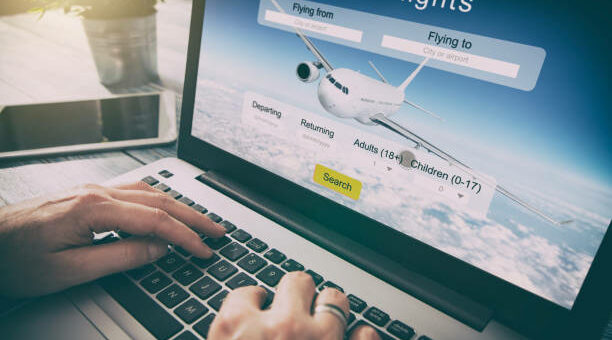
Introduction
Selecting the right aircraft is one of the most critical strategic decisions an airline can make. From route planning and cost efficiency to passenger comfort and maintenance, the process involves a complex evaluation of multiple variables. In this comprehensive guide, we explore how airlines choose their commercial aircraft, the factors involved, and what these decisions mean for operations and profitability.
1. Route Structure and Network Planning
The first and perhaps most important consideration is how well an aircraft fits into the airline’s existing and future route network.
a. Short-Haul vs. Long-Haul Needs
Airlines evaluate their destination markets and travel distances to decide whether they need:
- Narrow-body aircraft for regional and short-haul routes
- Wide-body aircraft for long-haul or high-capacity routes
For example:
- Low-cost carriers like Ryanair use the Boeing 737 for short-haul, high-frequency routes.
- Full-service carriers like Emirates use the Airbus A380 or Boeing 777 for long-distance, high-demand flights.
b. Frequency and Demand Forecasting
Airlines conduct demand analysis based on:
- Historical passenger traffic
- Business vs. leisure market segmentation
- Load factor projections and seasonality trends
Case Example: If demand is moderate but consistent, a smaller aircraft like the Airbus A220 might be chosen to maintain high load factors while offering frequent service.
2. Economic and Financial Considerations
A major part of the selection process involves evaluating the aircraft’s cost structure and long-term financial implications.
a. Acquisition and Leasing Costs
Airlines weigh the cost of buying vs. leasing:
| Acquisition Option | Pros | Cons |
|---|---|---|
| Buying | Long-term asset ownership | Large upfront capital |
| Leasing | Lower initial cost, flexible | Higher long-term payments |
Aircraft type, market demand, and depreciation schedules all influence this decision.
b. Operating Costs: Fuel, Maintenance, and Crew
Key operating cost variables include:
- Fuel Efficiency: Newer aircraft like the A320neo and 737 MAX offer 15–20% fuel savings.
- Maintenance Costs: Modern jets require less unscheduled maintenance.
- Crew Training and Salaries: Fleet standardization can reduce pilot and crew training costs.
Airlines use cost-per-available-seat-mile (CASM) as a benchmark.
3. Technical and Performance Evaluation
Performance characteristics play a vital role, especially in airports with geographic or regulatory constraints.
a. Airport Compatibility and Performance Metrics
Airlines assess:
- Runway length and airport altitude
- Noise restrictions and emissions limits
- Payload-range capability and takeoff performance
Example: Aircraft like the Boeing 757 were favored for short runways and transatlantic routes before newer alternatives emerged.
b. Fleet Commonality and Manufacturer Support
Fleet commonality is a significant operational advantage:
- Reduces pilot training time with common type ratings
- Simplifies spare parts inventory and logistics
- Enhances bargaining power with manufacturers
Many airlines choose aircraft families like the A320 or 737 to maintain commonality.
4. Passenger Experience and Brand Positioning
Customer satisfaction and brand image are increasingly considered in fleet decisions.
a. Cabin Layout, Comfort, and Amenities
Aircraft that support diverse cabin configurations allow airlines to align product offerings with brand promises:
- Seat pitch and width flexibility
- In-flight entertainment systems (IFE)
- Mood lighting and larger windows
Comparison Table:
| Feature | Boeing 787 | Airbus A350 |
| Cabin Pressure Altitude | ~6,000 ft | ~6,000 ft |
| Humidity Control | Yes | Yes |
| Noise Levels | Low | Very Low |
b. Noise and Environmental Footprint
Environmental and noise performance affects community relations and airport slots:
- Newer aircraft comply with Stage 4 and ICAO Chapter 14 noise standards
- Reduced CO2 and NOx emissions align with ESG goals
Passengers are more aware of sustainability—airlines use greener fleets to strengthen their brand.
5. Strategic Relationships and Market Timing
In addition to technical and operational factors, strategic and political considerations influence procurement.
a. Manufacturer Partnerships
Airlines with long-standing partnerships often benefit from:
- Discounted pricing or bulk order deals
- Faster delivery slots
- Joint R&D or customization options
Example: Delta’s strong relationship with Airbus has shaped its fleet renewal strategy around the A220 and A321neo.
b. Market Conditions and Timing
Macroeconomic trends and timing can significantly impact aircraft purchases:
- During downturns, aircraft may be available at discounted prices
- In peak cycles, delivery delays can affect capacity planning
Airlines may also hedge against rising fuel costs by ordering more efficient aircraft during oil price spikes.
Conclusion: A High-Stakes Balancing Act
The decision of how airlines choose their commercial aircraft involves a balancing act between operational needs, passenger expectations, and financial realities. It’s a process that requires forecasting, negotiation, and strategic alignment.
Whether selecting a nimble narrow-body for regional expansion or investing in a next-generation wide-body for intercontinental service, airlines must weigh dozens of interconnected factors.